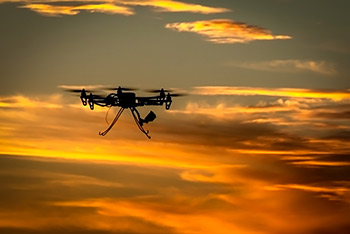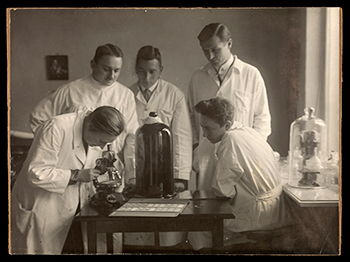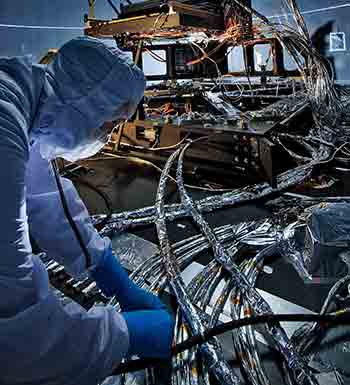- cello — home page for the Verilogish programming language to design computational circuits in living cells.
- Internet of Bricked Discontinued Things (BusinessInsider) — Shutting down Revolv does not mean that Nest is ceasing to support its products, leaving them vulnerable to bugs and other unpatched issues. It means that the $300 devices and accompanying apps will stop working completely.
- Bitcoin Users Reveal More Than They Think — new technologies trace BTC transactions, attempting to identify bitcoin users. A number of startups have raised money to explore these new possibilities
- Last Three Months of Paper-a-Day (Adrian Colyer) — a pointer to the highlights from the 68 papers he covered in the first three months of the year.
"Internet of Things" entries


Four short links: 5 April 2016
Programming Living Cells, Internet of Bricked Discontinued Things, Bitcoin User ID, and Paper-a-Day Roundup


Four short links: 3 March 2016
Tagging People, Maintenance Anti-Pattern, Insourced Brains, and Chat UI
- Human Traffickers Using RFID Chips (NPR) — It turns out this 20-something woman was being pimped out by her boyfriend, forced to sell herself for sex and hand him the money. “It was a small glass capsule with a little almost like a circuit board inside of it,” he said. “It’s an RFID chip. It’s used to tag cats and dogs. And someone had tagged her like an animal, like she was somebody’s pet that they owned.”
- Software Maintenance is an Anti-Pattern — Governments often use two anti-patterns when sustaining software: equating the “first release” with “complete” and moving to reduce sustaining staff too early; and how a reduction of staff is managed when a reduction in budget is appropriate.
- Cloud Latency and Autonomous Robots (Ars Technica) — “Accessing a cloud computer takes too long. The half-second time delay is too noticeable to a human,” says Ishiguro, an award-winning roboticist at Osaka University in Japan. “In real life, you never wait half a second for someone to respond. People answer much quicker than that.” Tech moves in cycles, from distributed to centralized and back again. As with mobile phones, the question becomes, “what is the right location for this functionality?” It’s folly to imagine everything belongs in the same place.
- Chat as UI (Alistair Croll) — The surface area of the interface is almost untestable. The UI is the log file. Every user interaction is also a survey. Chat is a great interface for the Internet of Things. It remains to be seen how many deep and meaningfuls I want to have with my fridge.

Rachel Kalmar on data ecosystems
The O’Reilly Hardware Podcast: Collecting, sharing, and accessing data from sensors.
Subscribe to the O’Reilly Hardware Podcast for insight and analysis about the Internet of Things and the worlds of hardware, software, and manufacturing: TuneIn, Stitcher, iTunes, SoundCloud, RSS.
In this new episode of the Hardware Podcast, David Cranor and I talk with data scientist Rachel Kalmar, formerly with Misfit Wearables and the founder and organizer of the Sensored Meetup in San Francisco. She shares insights from her work at the intersection of data, hardware, and health care.
Discussion points:
- The need for a “data ecosystem” approach: it’s important to understand the entire stack from acquisition through storage and analysis, and where security and privacy become concerns.
- Analysis and insight as the real value in data: consumers get very little from raw data.
- Authentication for smart devices—and an experiment (let us know if your lights went out during this podcast by e-mailing hardware@oreilly.com).

Sanjit Biswas on industrial sensors
The O’Reilly Hardware Podcast: The business of building, marketing, and deploying sensors in tough environments.
Subscribe to the O’Reilly Hardware Podcast for insight and analysis about the Internet of Things and the worlds of hardware, software, and manufacturing: TuneIn, Stitcher, iTunes, SoundCloud, RSS.
In this episode of the Hardware Podcast, David Cranor and I talk with Sanjit Biswas, founder and CEO of the industrial sensor company Samsara.
Discussion points:
- The challenges of making modern systems work with ancient industrial control systems already in the field
- The process of designing temperature sensors for heavy-duty deployments, including environmental constraints, firmware, testing, and necessary certifications
- Price sensitivity in the industrial sensor market; Samsara is one of several interesting startups that make it practical for mid-size businesses that haven’t been previously automated to add sensors

Matthew Berggren on making electronics accessible
The O’Reilly Hardware Podcast: Better ways to design electronics.
Subscribe to the O’Reilly Hardware Podcast for insight and analysis about the Internet of Things and the worlds of hardware, software, and manufacturing.
In our new episode of the Hardware Podcast, David Cranor and I talk with Matthew Berggren, who at the time the interview was conducted last December was senior director of product at Supplyframe. (Berggren is now director of Autodesk Circuits at Autodesk.)
Our discussion focuses on the need for abstracted modules and better metadata in electronics. Berggren gets to the root of it here:
There are 30 software developers for every hardware engineer in the world. That’s not only a tremendous bottleneck, but if you accept the premise that the next generation of products are going to be some hybrid of hardware and software—and really, hardware is the means to interact with the real world, and I want to write software applications that will interact with the real world—then there is this massive blue ocean out there that should present tremendous opportunity to semiconductor manufacturers, or anyone else who wants to get into that space.

Roger Chen on hardware and robotics startups
The O’Reilly Hardware Podcast: Hardware from the venture capitalist’s point of view.
Subscribe to the O’Reilly Hardware Podcast for insight and analysis about the Internet of Things and the worlds of hardware, software, and manufacturing.
In this new episode of the Hardware Podcast, David Cranor and I talk with Roger Chen, formerly a principal at O’Reilly AlphaTech Ventures, O’Reilly Media’s sister VC firm.
Discussion points:
- Chen’s perspective as an investor on companies that are creating 3D robotics, drones, and satellites
- The Maker movement’s impact on the hardware startups
- Etsy’s influence on the new hardware movement
- Trends in robotics, and the outlook for robotics startups

Charles Fracchia on a new breed of biologists
The O’Reilly Hardware Podcast: The merging worlds of software, hardware, and biology.
Subscribe to the O’Reilly Hardware Podcast for insight and analysis about the Internet of Things and the worlds of hardware, software, and manufacturing.
In this new episode of the Hardware Podcast—which features our first discussion focusing specifically on synthetic biology—David Cranor and I talk with Charles Fracchia, an IBM Fellow at the MIT Media Lab and founder of the synthetic biology company BioBright.
Discussion points:
- The blurring of the lines between biology, software development, hardware engineering, and electrical engineering
- BioBright’s efforts to create hardware and software tools to reinvent the way biology is done in a lab
- The most prominent market forces in biology today (especially healthcare)
- How experiments conducted using Arduino or Raspberry Pi devices are impacting synthetic biology
- Pembient’s synthetic rhino horns


Four short links: 11 January 2016
Productivity Mystery, Detecting Bullshit, Updating Cars, and Accountable Algorithms
- Why Americans Can’t Stop Working (The Atlantic) — summary of a paywalled economics paper on the mystery of increasing productivity yet increasing length of the work week. (via BoingBoing)
- On the Reception and Detection of Pseudo-Profound Bullshit (PDF) — These results support the idea that some people are more receptive to this type of bullshit and that detecting it is not merely a matter of indiscriminate skepticism but rather a discernment of deceptive vagueness in otherwise impressive sounding claims. (via Rowan Crawford)
- Tesla Model S Can Now Drive Without You (TechCrunch) — the upside of the Internet of Things is that objects get smarter while you sleep. (In fairness, they can also be pwned by Ukrainian teenagers while you sleep.)
- Replacing Judgement with Algorithms (Bruce Schneier) — We can get the benefits of automatic algorithmic systems while avoiding the dangers. It’s not even hard. Transparency and oversight with accountability.

Joe Biron on IoT platforms
The O’Reilly Hardware Podcast: Building systems to get the most from connected devices.
Subscribe to the O’Reilly Hardware Podcast for insight and analysis about the Internet of Things and the worlds of hardware, software, and manufacturing.
This episode of the Hardware Podcast features my second discussion with Joe Biron, VP of IoT technology at ThingWorx, a PTC business that offers a platform for rapid deployment of Internet of Things applications.
Discussion points:
- How IoT platforms provide the functionality that enables advanced capabilities for IoT products
- The common architecture of properties, services, and events
- How to future-proof an embedded application
- Platforms for industrial versus consumer devices
- The potential for products that can update their own behavior
- Embracing—or avoiding—smartphone creep, in which functions once performed by specialized hardware are taken over by a phone






